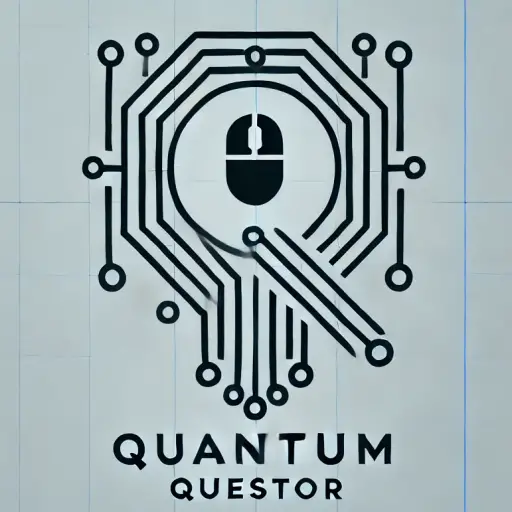
Blending two decades of engineering leadership with AI-powered research, this guide dives into practical ways to build AI systems that are ethical, robust, and actually usable in the real world.
Introduction: Why Ethics in AI Isn’t Just Nice to Have
AI is no longer some abstract, futuristic idea. It’s here, and it’s everywhere—from the routes our maps suggest, to which CVs get seen by a recruiter, to whether a loan is approved. The kicker? Most of us don’t even notice it’s happening.
And that’s exactly why this matters so much. When decisions that shape lives happen quietly in the background, the onus is on us—the builders, engineers, and decision-makers—to ensure they’re being made fairly and transparently. Over the past 20 years, I’ve seen the tech landscape shift massively, and one thing’s clear: the more powerful our tools get, the more responsibility we have to use them carefully.
So the real question isn’t should we build ethical AI? It’s how we do it responsibly, in a way that can be measured, trusted, and sustained.
Why Ethics Can’t Be an Afterthought
The Scale of Influence
AI scales fast. So when it goes wrong, it doesn’t just mess up once—it reinforces biases at scale. A hiring algorithm isn’t just skipping one candidate; it might be filtering out whole demographics. A buggy diagnostic tool doesn’t just misread one scan; it might affect thousands of healthcare decisions.
Some examples from the real world:
-
Facial recognition tools with higher error rates for darker skin tones have led to false arrests
-
Hiring algorithms that unknowingly penalised women applicants
-
Credit scoring systems that baked in historical discrimination, at speed and scale
The Technical Bit
Here’s the reality: bias in AI isn’t always a coding error. It’s often a reflection of the data we give it. Models are designed to learn patterns. If those patterns are skewed, the outputs will be too—no malice required.
# Define a method to detect and compare outcomes across groups
function analyze_model_bias(data, target, protected_group):
train model without protected_group
predict outcomes
for each group in protected_group:
calculate accuracy, positive rate, true positive rate
return metrics comparisonWhat Ethical AI Leaders Tend to Get Right
1. Transparency, Not Just Talk
The companies who are serious about this don’t just slap a mission statement on their website. They make their models and decisions understandable—even to non-experts.
# Define a method to detect and compare outcomes across groups
function analyze_model_bias(data, target, protected_group):
train model without protected_group
predict outcomes
for each group in protected_group:
calculate accuracy, positive rate, true positive rate
return metrics comparison2. Bias Isn’t Ignored—It’s Hunted
Instead of waiting for a journalist or lawsuit to point out issues, forward-thinking teams test and tune for fairness right from the start.
# Define a method to detect and compare outcomes across groups
function analyze_model_bias(data, target, protected_group):
train model without protected_group
predict outcomes
for each group in protected_group:
calculate accuracy, positive rate, true positive rate
return metrics comparison3. Ongoing Monitoring
Data shifts. Social norms evolve. What was “fair” last year might not be today. Good systems get reviewed regularly, not just once at launch.
# Define a method to detect and compare outcomes across groups
function analyze_model_bias(data, target, protected_group):
train model without protected_group
predict outcomes
for each group in protected_group:
calculate accuracy, positive rate, true positive rate
return metrics comparisonCase Studies: What We Can Learn from the Big Players
Google: Trying to Lead
Google has one of the more developed ethical AI playbooks. They launched tools like the “What-If” bias visualiser, set up internal review boards, and published metrics. But it hasn’t all been smooth sailing—internal conflicts showed how hard it is to balance ethics with scale.
Key takeaway: Ethics need more than statements. They need processes.
Microsoft: Building Tools for Others
Microsoft is pushing fairness tools like Fairlearn and InterpretML out to enterprise teams. They’ve invested in toolkits that make it easier to evaluate and fix problems, rather than just identify them.
# Define a method to detect and compare outcomes across groups
function analyze_model_bias(data, target, protected_group):
train model without protected_group
predict outcomes
for each group in protected_group:
calculate accuracy, positive rate, true positive rate
return metrics comparisonOpenAI: Walking the Line Between Open and Safe
OpenAI made waves when it delayed GPT-2’s full release, citing safety risks. That move divided people—some called it responsible, others called it gatekeeping. Still, it pushed the conversation forward.
Big idea: Transparency and safety aren’t always aligned. Navigating that tension is part of ethical leadership.
Regulation: What’s Coming, and How to Prepare
EU: Leading the Pack
The EU’s AI Act is arguably the most thorough attempt to regulate AI to date. It classifies systems by risk and sets strict requirements for the most sensitive use cases.
# Define a method to detect and compare outcomes across groups
function analyze_model_bias(data, target, protected_group):
train model without protected_group
predict outcomes
for each group in protected_group:
calculate accuracy, positive rate, true positive rate
return metrics comparisonUS: More Patchwork, Less Central Control
In contrast, the US approach is more fragmented. Agencies like the FTC and NIST are creating frameworks, but there’s no single unifying law yet.
Global Efforts: UNESCO and Beyond
International coordination is tough, but efforts like UNESCO’s AI ethics framework aim to set some shared baselines.
What Actually Works: Real Strategies for Ethical AI
Build the Right Team
You can’t code your way to fairness alone. You need teams that reflect the people your system will impact, plus folks who understand policy, law, and ethics.
Must-haves:
-
People from different backgrounds and lived experiences
-
Policy and legal advisors
-
Subject matter experts
-
Engineers who can connect ethics to implementation
Bake Ethics into Decisions
Don’t wait until the end to do a “fairness check.” Use decision frameworks early and often to catch problems before they’re costly—to people or reputation.
# Define a method to detect and compare outcomes across groups
function analyze_model_bias(data, target, protected_group):
train model without protected_group
predict outcomes
for each group in protected_group:
calculate accuracy, positive rate, true positive rate
return metrics comparisonThat’s the crux of it: ethical AI isn’t a checklist, and it’s not someone else’s job. It’s about building systems we’d be proud to put our names to. Systems that treat people with dignity, and decisions we can actually explain.
We might not get it perfect. But we can get it a whole lot better than we are now.
Further Reading and References
Written by Quantum Questor, with the assistance of AI tools including ChatGPT and Claude.



